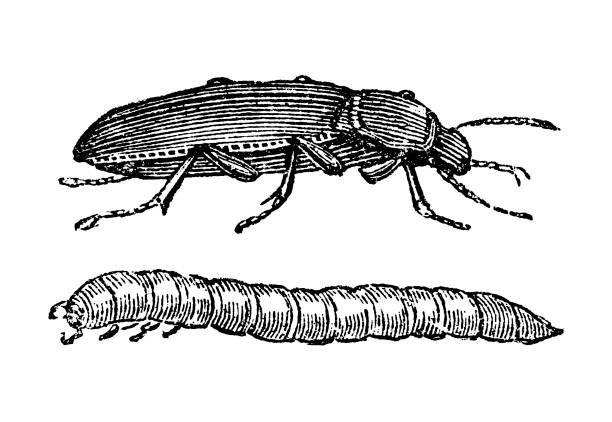What do mealworms turn into?
Mealworms: From Wriggly Bugs to Beautiful Beetles
Did you know that mealworms, those squirming little creatures you feed to your pet reptiles or use as bait for fishing, can transform into something completely different? They actually begin their lives as tiny eggs that transform into larvae, then pupae, and finally emerge as beautiful beetles.
Do mealworms turn into beetles? Let’s take a closer look at this fascinating transformation:
What do mealworms turn into: Egg Stage
What do mealworms turn into? Mealworm eggs are small, white, and cylindrical in shape. They are laid by adult beetles, and the female can lay up to 500 eggs in her lifetime! The eggs take around four to 19 days to hatch, depending on the temperature and humidity.
What does a mealworms turn into: Larva Stage
The hatched mealworm eggs turn into mealworm larvae, also known as “worms.” These larvae are not technically worms, but rather the immature form of the darkling beetle. Mealworm larvae are famous for their characteristic wriggling movement and the fact that they are a popular food source for many animals. They have a white, soft body and a brown head.
Mealworms Pupae Stage
After about three to six weeks, the mealworms will stop eating and burrow into a dark place to transform into pupae. At this stage, they will molt their outer layer and transform their entire body. The pupae are tan or brown and resemble a miniature shrimp.
Beetle Stage
After about one to three weeks, the adult beetle emerges from the mealworms pupa stage. The beetle form of the meal worm has a hard exoskeleton and ranges in color from light brown to black. They have long antennae and are about 1.5 to 3 cm long. They feed on grains, vegetables, and fruits and can live for several months.
So there you have it – mealworms are not just squirming little bugs, they are actually fascinating creatures with an incredible transformation process. Who knows, maybe next time you see one, you’ll have a new appreciation for their journey from egg to beetle.
What do mealworms turn into
One of the biggest questions that many people have about meal worms is how long they actually live. They are a popular source of nutrients for many animals, and they are commonly used as food for reptiles, birds, and other creatures. So, it’s essential to understand how long they live to ensure that they are being used effectively as a food source.
First off, it’s important to note, mealworms go through four life stages: egg, larva, pupa, and adult. During their larval stage, mealworms are the most commonly used as food. They are raised specifically for this purpose, and their lifespan is monitored closely to ensure they are being harvested at the right time. As for an actual lifespan, the answer is roughly three months, but it can vary depending on various factors.
Lifespan
The environment that mealworms are raised in can have an impact on their lifespan. In a well-maintained environment, they can live for up to six months. On the other hand, if they are in a harsh environment, such as high temperatures or low humidity levels, they may only live for a few weeks.
Another factor that affects their lifespan is the amount of food they consume. What do mealworms eat? Mealworms require a consistent supply of fresh food to survive. If they do not get enough food, their lifespan will be reduced. Similarly, if they are overcrowded, they will quickly deplete their food sources and may not survive long.
Lastly, it’s essential to store mealworms correctly. If not stored correctly, they may develop infections or diseases that can shorten their lifespan drastically. It’s recommended that they are kept in a clean, dry container away from direct sunlight and high heat.
In conclusion, they can live up to six months under optimal conditions. However, the average lifespan is around three months. Their lifespan can be influenced by several factors, including the environment they are raised in, the amount of food they consume, and how they are stored. Knowing these factors is crucial when using mealworms as a food source for you.
In conclusion for their life cycle
The life cycle of mealworms is a fascinating and intricate process that highlights the wonders of nature. Understanding their life cycle can help you how to raise mealworms for various purposes, such as feeding to pets and helping to recycle organic materials. So, next time you see a mealworm, remember that they have a lot more going on under their exoskeleton than you might think. Happy bug-watching!








